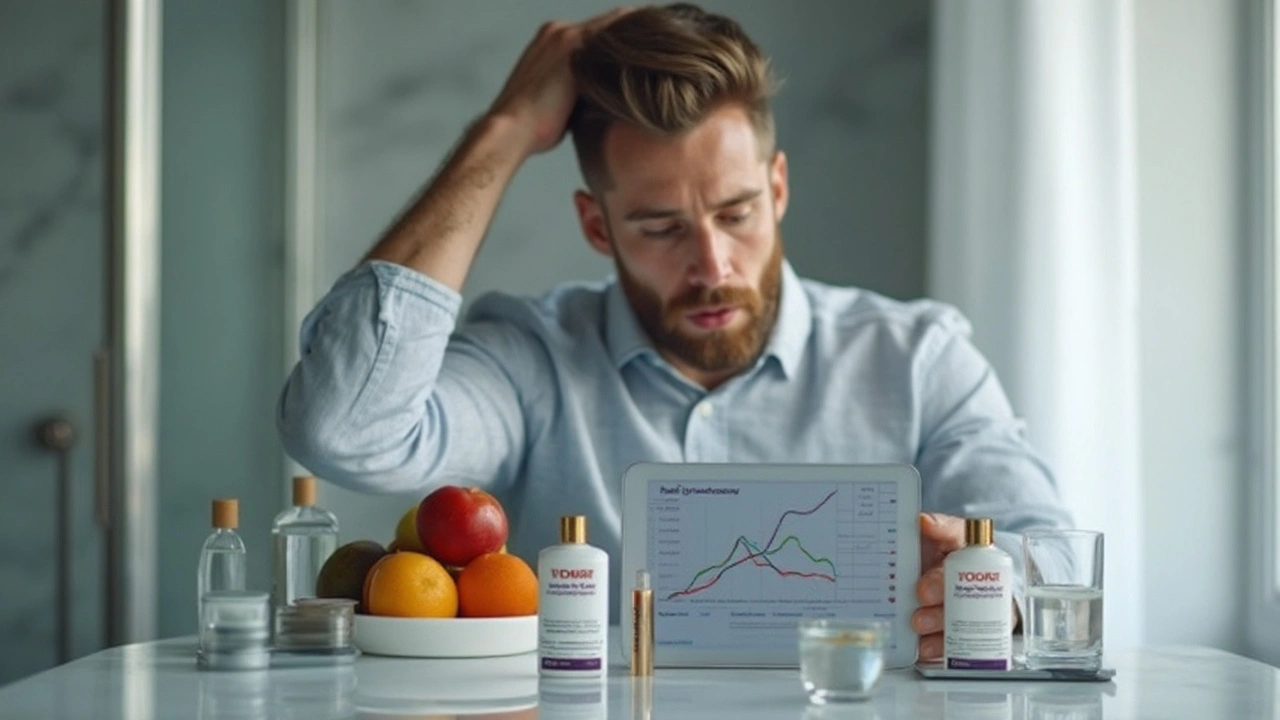Losing hair can feel personal and stressful, but a lot of people see real improvement with the right steps. You don’t need miracle products. You need a plan that fits your cause, your budget, and a realistic timeline. Below are straightforward, proven options and daily habits that help hair regrow or stop more loss.
Minoxidil (Rogaine) is the most common over-the-counter option. Use it daily and expect 3–6 months before you notice fuller hair. If you stop, gains usually fade. For men, 5% solutions are common; women often start with 2% or a foam version to reduce irritation.
Finasteride is a prescription pill for men. It blocks DHT, a hormone that shrinks hair follicles. Results typically appear after 3–6 months, and continuous use is needed to maintain results. Talk to your doctor about possible side effects before starting.
Platelet-rich plasma (PRP) injections and low-level laser therapy (LLLT) are clinic options. PRP uses your blood’s growth factors and often requires 3 sessions spaced weeks apart, then maintenance. LLLT devices (combs or caps) show modest gains in some trials; daily use for several months is key.
Hair transplant surgery gives immediate density where grafts are placed, but it’s surgery: cost, recovery, and realistic expectations matter. Choose a clinic with before/after photos and happy patient reviews.
Start with basics: eat enough protein, check iron and vitamin D if you suspect deficiency, and avoid crash diets. Biotin helps only if you’re deficient — most people don’t need it.
Be gentle with your hair. Swap tight styles, limit heat tools, and choose a mild shampoo. Scalp massage for 5 minutes daily can increase blood flow and feels good — some small studies suggest it may help with thickness over months.
Watch for triggers: sudden shedding after stress or illness (telogen effluvium) often recovers in 3–6 months once the trigger clears. If you see rapid patchy loss, scarring, or redness, book a dermatologist visit — that may indicate alopecia areata or an infection that needs targeted care.
Combine treatments carefully. Using minoxidil with a medical option like finasteride or PRP can boost results, but always check with your clinician first. Track progress with photos every month rather than daily obsessing in the mirror.
Bottom line: start with a clear cause (genetics, hormones, stress, meds), pick one medical route if needed, and keep simple daily habits. Most effective results take months, so patience plus consistent action wins more often than chasing quick fixes.

Searching for fewer side effects than finasteride in 2025? This article explores the best substitutes for hair loss: low-dose dutasteride, ketoconazole shampoo, and smart lifestyle changes. Find real numbers, actionable tips, and science-backed insights into managing hair loss for men who want options beyond the usual prescription. All facts, no fluff—delivered with clarity. Get to know what actually works and how to reduce risks.
More